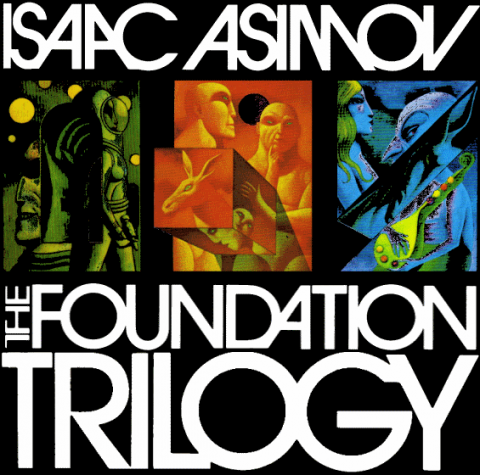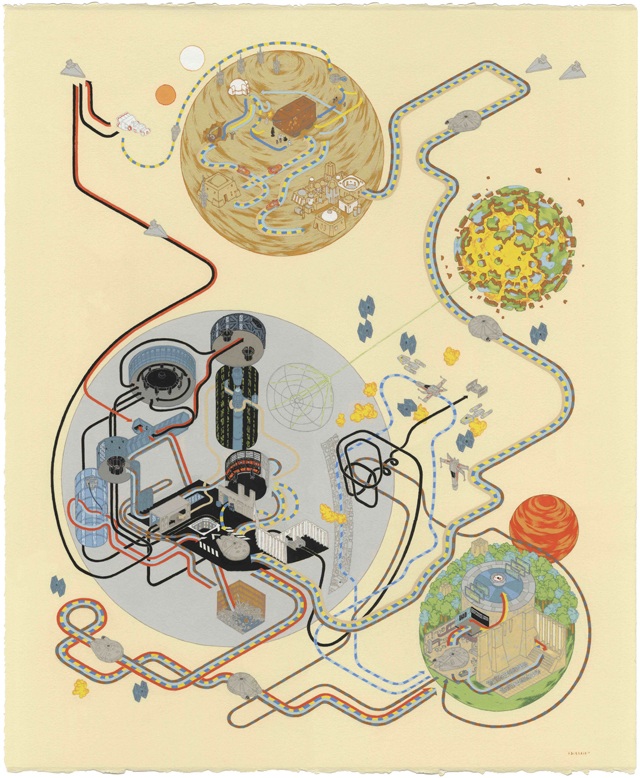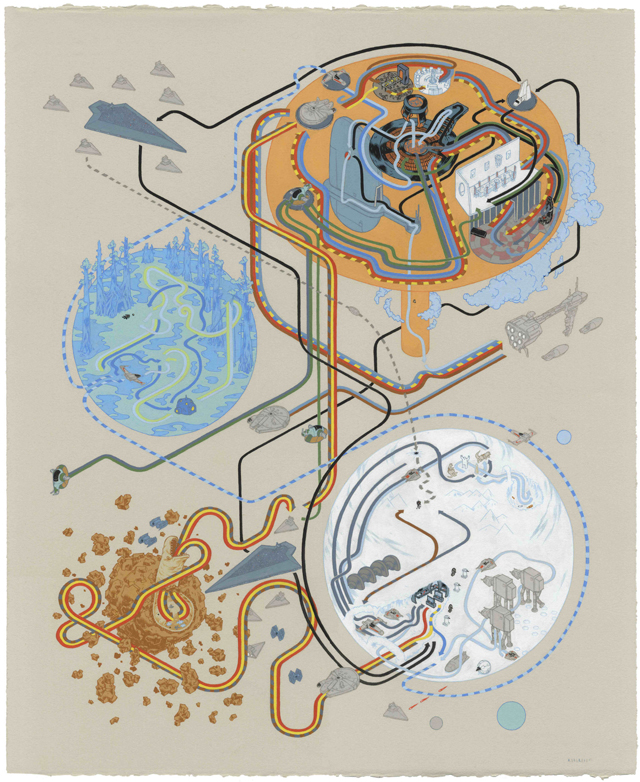The following is a repost from
Tim Maughan over at TOR. Now, while I am not as much of an animé aficionado as some, I
mostly agreed with the list. I say mostly because some of these I haven't seen yet so how could I disagree. Just thought I might share this since they sound like they'd be worth watching.
______________________________start article by
Tim Maughan____________________
Cowboy Bebop (1998) - 26 episodes
When it first hit Japan at the end of the 90s,
Shinichiro Watanabe’s seminal
Cowboy Bebop
broke new ground for anime on TV. An overly stylistic take on the
established space opera genre, it’s the story of a disparate bunch of
planet-hopping bounty hunters struggling to make a living. It gave
Watanabe a chance to shamelessly take influences from all of his
favourite pop-culture sources—from Star Wars and cyberpunk literature to
Hollywood westerns and Quentin Tarantino movies, all set to
Yoko Kano’s
eclectic, vibrant jazz infused soundtrack. The result was an
international hit; one of the few shows of the period that found itself
transmitted not only on U.S. TV but also across most of Europe, spawning
a theatrical movie, various different DVD releases, merchandise, and
giving shameless inspiration to Buffy creator Joss Whedon to pen his
cult favorite
Firefly.
It’s easy to criticize Watanabe’s direction as style over substance at first glance, but in reality it’s
Keiko Nobumoto’s
skillfully crafted scripts that are the reason for the show’s success.
Throughout the 26 episodes Watanabe manages to do the impossible—combine
outlandish plots and settings with believable, empathetic characters
that the viewer feels a genuine, true attachment towards. For all the
choreographed fight scenes, orbital dogfights and John Woo style
shootouts,
Bebop’s true heart lies in its dry humour, sexual
energy and the gentle, masterful unfurling of its characters’ back
stories. If I had to pick one episode of one anime to show a
non-believer, it would be episode 17 of
Cowboy Bebop “Speak
Like a Child”; a perfect 25 minutes of script writing that starts with
gentle comedy and ends in emotional heartbreak. Watanabe tried to
recreate the vibe with his
Chanbara-meets-hip-hop follow up
Samurai Champloo, but the characters and plots were limited by the setting, and although
Champloo is ingenious and riveting throughout,
Cowboy Bebop still remains his masterpiece and one of the most exhilarating, watchable works of anime ever made.
Paranoia Agent (2004) - 13 episodes

The term “auteur” is often overused by critics—especially in anime
circles—but if there’s one director that truly lived up to the title
then it was arguably the late
Satoshi Kon. After completing his masterpiece trio of experimental, reality-bending films—
Perfect Blue, Tokyo Godfathers and
Millennium Actress—Kon
found himself with an abundance of new ideas and desiring a break from
the long production cycle of high budget anime features. Turning to
television the result was the
Madhouse produced
Paranoia Agent;
a dark, deeply twisted story of two cops tracking a mysterious teenage
hoodlum dubbed Li’l Slugger by the media. As the two detectives
investigate the case, the lives of Slugger’s seemingly random assault
victims become the series’ initial focus and soon there appear to be no
truly innocent bystanders. But just as Kon leads the viewer down one
apparent path he, of course, pulls his usual reality-shifting,
mind-bending, plot-twisting trick with the show’s surprising climax.
Paranoia Agent
is an unusual, brave and at times challenging example of what anime can
achieve, and perhaps what no other art form can. Even just a few years
after its first broadcast it seems hard to believe that it was made for
television—especially in today’s recession hit, conservative climate.
Gunslinger Girl (2003) - 13 episodes

It’s impossible to deny that the vast majority of anime and manga rely
heavily on established genres, well-trodden clichés, recycled storylines
and archetypal characters. Which is why it’s refreshing when a show
like
Gunslinger Girl
comes along to challenge the accepted standards of the medium. Set in
modern day Italy, it follows the activities of the Social Welfare
Agency, a shadowy government group that uses abused, brain-washed young
girls as trained assassins to eliminate political rivals, and focuses on
the relationship between the girls and their older, male handlers. A
story about over-cute, teenage girls turned cybernetic killers is
nothing new, but writer
Yu Aida
(who also penned the original manga) turns it into a chilling, scathing
deconstruction of anime’s moral values. Everything is questioned—the
over sexualisation of young girls and their idolizing relationships with
older men, the continued, accepted association of children with
violence. The celebration and stylisation of that violence is challenged
in the most brutal, disturbing, and heart-wrenching of manners.
Gunslinger Girl holds a mirror up to anime and it’s
moe
obsessed otaku followers, asking them to look at what they find so
titillating and exhilarating, as if the blood and consequences were real
and in their hands. Its challenging plot and message is backed by
strong production values and its gentle European ambiance, making it one
of the most controversial anime productions of the last decades. It
splits anime fans even now, with many refusing to see it as anything
more than fan-pandering—interestingly (in my experience) a reaction
seldom seen from viewers from outside anime fandom.
Neon Genesis Evangelion (1994) - 26 episodes plus various OVA releases and alternative versions

Few anime franchises have had the lasting impact on anime and wider Japanese pop culture that
Gainax’s Neon Genesis Evangelion
has had. The story of giant mecha battling strange, powerful creatures,
it is yet another show that takes standard anime clichés—angst-ridden
teenage pilots, over-the-top battle sequences, end-of-the-world
scenarios—and uses them to try and tell a different, deeper story.
Focusing largely on the lives of the children that are forced—at times
against their will—to defend earth from this unknown, mysterious enemy,
it moves from being a simple coming of age story to dealing with
psychoanalysis, mental illness, and the essence of human nature.
Similarly, in amongst the teen drama and city-leveling action sequences,
Hideaki Anno’s
script plays with Christian and biblical symbolism to explore
philosophical and spiritual concepts, as well as questioning the nature
of reality itself. As such, it has become one of the most widely
discussed and analyzed anime ever produced. As if the series wasn’t
complex enough, an OVA—
The End of Evangelion—was
released that gave an alternate telling of the series’ climax. While
its philosophical explorations have helped it to stick in Japan’s
collective consciousness, its visual style also played a massive role in
revitalising the medium, on mecha and character design in particular,
spawning not only many imitators but also a current movie series
retelling. It is still the original TV run that remains compelling and
essential viewing.
Ghost in the Shell: Stand Alone Complex (2002) - 26 episodes
 Masamune Shirow’s Ghost in the Shell
Masamune Shirow’s Ghost in the Shell manga had already been a huge hit in Japan before
Mamoru Oshii’s 1995 film version turned it into a global cult hit, so the idea of it also spawning a TV show must have been circulating at
Production IG
for years. It wasn’t until 2002 that it finally happened, and along
with allowing the powerhouse studio another chance to mine the property,
they also took it as an opportunity to appease disgruntled fans that
felt Oshii had strayed too far from the source material. The series
recaptures the more lighthearted, action-driven feel of Shirow’s manga,
but still remains a dark, serious story of high-tech special forces
tackling hackers, terrorists, corrupt government regimes, and rogue AIs.
Each episode is densely packed with complex plots that can, at times,
be tough to follow, but are backed up by another eclectic, brooding Yoko
Kano-directed soundtrack and probably the best depiction of Shirow’s
distinctive weapon and technology designs, including the now iconic
Tachikoma mechs. Those that can’t commit to the entire 26 episode run can try the
Laughing Man
compilation film, that edits together key scenes to tell the series’
over-arching main plotline, but you risk missing out on some of the more
interesting standalone episodes. And for those who get understandably
sucked in, there’s always the second season—
Ghost in the Shell: S.A.C. 2nd Gig—which is as equally well crafted, complex, and even more politically challenging.
Future Boy Conan (1978) - 26 episodes

A good decade before they turned
Studio Ghibli into the internationally renowned animation powerhouse it is now,
Hayao Miyazaki and
Isao Takahata were making shows for TV, most notably amongst them
Future Boy Conan.
After global catastrophes have threatened mankind with extinction, a
man and his 11-year-old grandson Conan, the only survivors of a group
attempting to flee Earth, become stranded on a remote island after their
spaceship crash lands. Believing themselves to possibly be the only
remaining humans, their world is turned upside down when a young girl is
washed up on the shore, pursued by mysterious military forces.
What’s fascinating about watching the show now is how distinctly the
30-year-old production feels like a more contemporary Ghibli classic.
All the elements are there. Despite the obvious low budget and simple
animation, the visuals exude the Ghibli magic, with the character and
aircraft designs so clearly Miyazaki’s and pacing and background vista
shots so blatantly the product of Takahata’s storyboarding. Even more
importantly, it foretells the pair’s stunning gift for storytelling,
with many of the themes of Ghibli’s output—environmental destruction,
industrialisation, conflict and children facing up to their roles in the
world—prototyped here. It’s a magical series that somehow manages to
feel as much fresh as it does nostalgic, and one that should be shared
with the whole family.
Planetes (2003) - 26 episodes
 Sunrise’s Planetes
Sunrise’s Planetes
manages to accomplish something that few sci-fi TV shows, animated or
otherwise, have done: Convincingly combine slice-of-life soap opera,
humour, a realistic scientific basis, and an analysis of global politics
into accessible, polished entertainment. Set at a time when mankind is
first venturing into living permanently in space, it shows you the high
frontier from the bottom of the social ladder as it follows the lives of
the crew of the Toy Box, an aging debris collection ship—basically the
orbital equivalent of a road sweeper. Their mundane work gains more
danger and significance as their orbital world is threatened by
downtrodden third world terrorists. It’s here—and in it’s grim portrayal
of the very real threat of cancer to those who spend too long in
space—that the show questions the real importance of
and
celebrates human space exploration, accusing it of not only being
politically and economically divisive and a waste of money and
resources, but perhaps also biologically unnatural. It’s beautifully
drawn throughout, with obvious visual nods to NASA, Stanley Kubrick’s
2001 and classic sci-fi literature, but it’s
Ichirō Ōkouchi’s
always tight script and believably fleshed out characters that are the
show’s winning assets. While frequently mature and serious, it is paced
with well-handled comedy and subtle romance that makes it a joy to
watch. It’s this skillful balance and its compelling plot that make
Planetes
not only perhaps my favourite anime series of all time, but one of the
best examples of science fiction that television of any form has
produced.
Serial Experiments Lain (1998) - 13 episodes

Set in “present day, present time” according to the show’s opening scrawl, psychological thriller
Serial Experiments Lain
focuses on Lain Iwakura, a teenage girl living in suburban Japan, and
her introduction to the Wired, a global communications network similar
to the internet. At a time when internet use was blossoming amongst
young people and online subcultures were first cohering, Lain was the
first anime series to truly try and capture the emotional and social
attachments that are so easily formed to virtual worlds, and how reality
can seemed blurred when you divide your time between them and the
actual world.
But it didn’t end there—Lain went beyond looking at the psychology of
internet culture to touch upon themes of philosophy, theology, mental
illness, depression, and existentialism. Director
Ryutaro Nakamura and writer
Chiaki J. Konaka set out to create a show that would deliberately be open to different interpretations, and they certainly succeeded, with
Lain being the most vigorously analysed and discussed anime since
Neon Genesis Evangelion
in both academic and fan circles. With so much going on thematically
it’s easy to forget the series’ visual impact; the angst-ridden
character design would influence not just anime but also Japanese and
gothic fashion for years afterwards, and the slightly trippy,
surrealistic background art questioned the constant quest for realism in
animation at the time. A challenging work at times, but ultimately a
rewarding one.
Denno Coil (2007) - 26 episodes

In many ways
Mitsuo Iso’s Denno Coil covers similar thematic ground to
Serial Experiments Lain,
but from a refreshingly different perspective. Centered around a group
of Japanese elementary school children, the show is at first glance
apparently aimed at that age group, but with closer inspection that’s
about as useful an assessment as dismissing
My Neighbor Totoro or
Spirited Away as just kids films—and the comparison between
Denno Coil
and some of Ghibli’s better crafted output is a wholly deserved and
justifiable one. Set in 2026, it tells the story of young Yūko Okonogi,
who moves with her family to the city of Daikoku, the technological
centre of an emerging half-virtual world, created after the introduction
of internet-connected augmented reality eyeglasses.
It isn’t merely the age of its protagonists that gives
Denno Coil its fresh perspective compared to
Lain,
however, it’s also the decade between when the two were written—DC’s
understanding of how networked technology has become so interwoven with
our daily lives means that it often succeeds where
Lain tried
but failed. One of my strongest beliefs is that good science fiction
always makes social commentary on the time in which it was written, and
it is here that
Denno Coil excels, presenting a world where
children are more in touch with technology than their parents, are
obsessed with video games and
Pokemon style fads, and where
peer pressure and owning the latest gadgets can become almost
disturbingly important. Truly a classic series that exudes subtlety and
elegance, and not to be missed.
Mononoke (2007) - 12 episodes

In 2006
Toei released their eleven episode series
Ayakashi: Samurai Horror Tales,
an anthology of three separate stories based on traditional Japanese
myths, written and produced by three separate teams. The show was only a
moderate success until the third and final story about a mysterious
traveling medicine seller caught the fans’ imagination, largely due to
its unique visual style, which mimics traditional
Ukiyo-e art. A year later Toei expanded the character into his series, and the breathtaking
Mononoke was born.
Given a larger budget and 13 episodes to work within, director
Kenji Nakamura
was able to push his vision to the limit. The result was one of the
most stylish, visually compelling series to emerge from Japan in
decades. His use of traditional colours animated over an exaggerated
textured paper effect, sprinkled with frenetic action and psychedelic
sequences, all held together by a masterful eye for framing and
direction makes every single second of
Mononoke a mesmerising joy to behold. But again, it’s not just a case of style over substance;
Mononoke
combines sinister plot lines and minimal, subtle sound effects to
create a truly chilling, creepy horror story experience, and an anime
series that genuinely feels like no other.
______________________________end article by
Tim Maughan____________________






 For many of us in the west, this is the one that started it all. Up until we first saw
For many of us in the west, this is the one that started it all. Up until we first saw  One of the most influential anime films of all time,
One of the most influential anime films of all time,  I’ve talked at length
I’ve talked at length  I’ve
already got one Miyazaki movie in this list, and it’s hard to limit it
to just two. Picking a second one is even harder. My opinion changes on a
near daily basis, or depending on the last one I happened to watch. But
I’ll always have a soft spot for
I’ve
already got one Miyazaki movie in this list, and it’s hard to limit it
to just two. Picking a second one is even harder. My opinion changes on a
near daily basis, or depending on the last one I happened to watch. But
I’ll always have a soft spot for  Perhaps
Perhaps  The feature film debut of the then still young—but now legendary—studio
The feature film debut of the then still young—but now legendary—studio  The history of the
The history of the  The directorial debut of anime auteur
The directorial debut of anime auteur  Produced by Katsuhiro Otomo, and based on some of his short manga stories,
Produced by Katsuhiro Otomo, and based on some of his short manga stories,  Loosely based on a popular Japanese novel,
Loosely based on a popular Japanese novel, 



















 As you know, we'll be releasing a premium collection of the AD&D A-series adventures (
As you know, we'll be releasing a premium collection of the AD&D A-series adventures (




